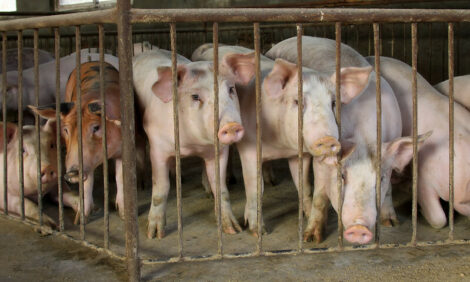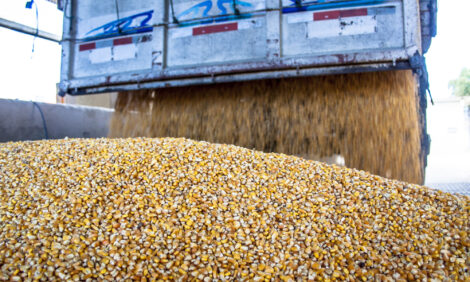



VLA: H1N1 Virus Predisposed to <em>Streptococcus Suis</em>
UK - Pandemic H1N1 (2009) influenza virus has been predisposed to porcine Streptococcus suis septicaemia, according to the Veterinary Laboratories Agency (VLA) in its report for June 2010.Alimentary Tract diseases
Colienteritis
E. coli 0149:K91, K88AC (Abbotstown) was isolated from faecal samples and a necropsy specimen as part of an investigation into scouring and mortality in seven to eight-week-old post-weaned rearing pigs. At the time of the investigation, about 50 from 1,500 had been affected with 10 deaths.
Swine dysentery
Starcross isolated Brachyspira hyodysenteriae from a two-month-old pig with diarrhoea that was unresponsive to antibiotic treatment, confirming a diagnosis of swine dysentery.
Salmonellosis

Winchester necropsied two, seven to eight week-old pigs from a large breeding herd which had a history of weight loss and poor body condition. Post mortem examination of an affected pig revealed a severe necrotic colitis and typhlitis, and a Group B Salmonella organism later identified as S.Typhimurium DT104 was isolated. The other pig showed severe and extensive pneumonic changes in the lungs accompanied by a pericarditis, and histopathological examination confirmed a suppurative bronchointerstitial pneumonia, and Bordetella bronchiseptica was isolated from the affected lung tissue. The possible underlying involvement of PMWS was suspected but not confirmed by histopathology.
Respiratory Diseases
Influenza
Pandemic H1N1 2009 influenza virus infection was detected in one of three post weaned pigs submitted to Bury to investigate and outbreak of disease presenting with lameness, recumbency, nervous signs and some deaths. A fibrinopurulent polyarthritis was identified together with meningitis. Streptococcus suis type 2 was isolated from all three pigs. As there was patchy cranioventral consolidation in two of the pigs, testing for swine influenza was undertaken and one pig was found to be infected by PCR. This is similar to several recent outbreaks of swine influenza virus infection where streptococcal infections have been diagnosed concurrent with swine influenza virus infection.
Thirsk also diagnosed swine influenza having carried out an investigation into a transient cough noticed among gilts after their arrival from a breeding company. Gilts were vaccinated for enzootic pneumonia and PRRSv on arrival. Some gilts were also bled for paired serology. On PCR testing of the swabs for swine influenza, three of the six swabs proved positive for influenza A RNA. Virus isolation was attempted on two of the three positive swabs and an H1 influenza virus was isolated which was similar to A/SW/Eng/438207/94 (H1N2).
Other Diseases
Louse infestation and iron deficiency anaemia
Ill thrift was reported in approximately 25 per cent of pre-weaned pigs on a small 24-sow breeder-finisher unit which was part of a mixed holding with other livestock species. One live four-week-old piglet was submitted to Bury in poor body condition. The pig was anaemic and hairy and many Haematopinus suis lice were present. It would be unusual for H. suis, although a sucking louse, to cause anaemia and other causes were investigated and revealed iron deficiency anaemia (serum iron 4.9μmol/l, reference range 11 to 32 μmol/l). No iron supplementation had been given.
Further Reading
| - | Find out more information on the diseases mentioned by clicking here. |






